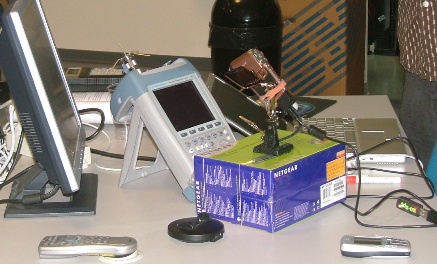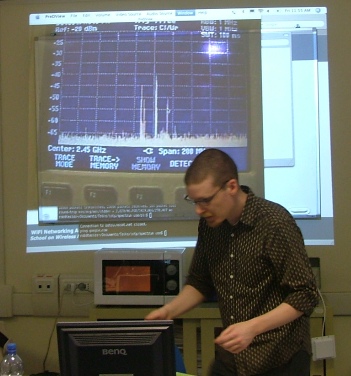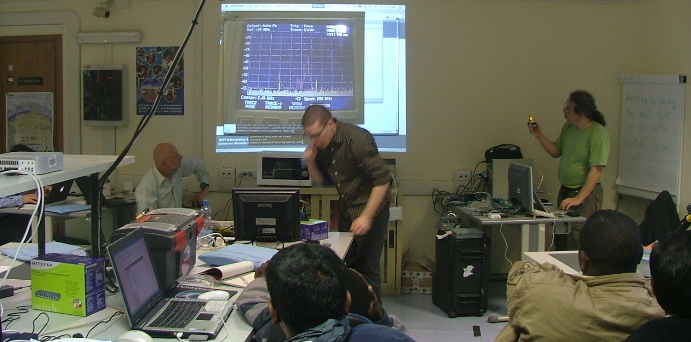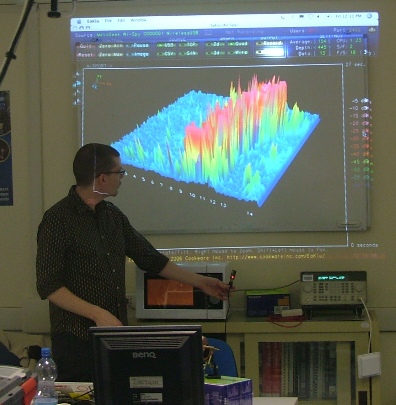Friday09 Group2
From School2007
 Dairy: Friday 09 February 2007 By P.Padmatheepan, Sri Lanka
Dairy: Friday 09 February 2007 By P.Padmatheepan, Sri Lanka
Contents |
[edit] Spectrum Management and Regulatory Issues (by Prof R. Struzak)
Starting from the historical backgound, Prof. R. Struzak addressed the regulatory aspect of the use of the frequency spectrum. The lecture explained why international regulations are crucial in this matter and how they are usually passed at the ITU.
At his lecture, Prof. R. Struzak were explain the purpose of that matter is to review regulations that specify how radio systems of any kind should (or should not) be used in all countries so radio regulation is an International Treaty that defines how radio waves and satellite orbits should (or should not) be used and managed.
Prof. R. Struzak were also explain of basic problems of the International Radio Regulations. Access to the existing information infrastructure, and to that of the future Information society, depends critically on radio, How the spectrum of radio frequencies is regulated on the society, its security, prosperity, and culture. The radio regulations is a important framework for using radio.
[edit] Use of Unlicensed Spectrum and WiFi Channel Management (by R. Fickenger)
In this lecture, Rob was explain about interference issue. These considerations are important to keep in mind when using devices that operate using unlicensed spectrum.
* All devices must share the available radio bandwidth. * Devices that use different protocols are typically unaware of each other. * This competition leads to contention, retries, noise, or static. * The effect and amount of interference depends on how the devices make use of the spectrum.
There can often be other unintentional noise sources that are not even related to communications.
* Microwave ovens * Power supplies * Radar stations * Harmonics of high power RF sources * RF lighting
We were also explained about common communication devices operate at 2.4GHz.
[edit] WiFi Monitoring using Linux (by R. Fickenger)
The spectrum analizing lecture is very nice today and we were learn more about radio spectrum analizing. He explain through many practical works with spectrum analizer. That is very fantastic live demo...
There are many tools to detect interference such as Kismet, Wi-Spy, Eakin for Wi-Spy, Spectrum Analizer, Error packet counter, and Network detection tools for finding network interference,..
At the picture, Rob shown by live demo how to use these tools to detect interference.. Error packet counter is used for watch how much excessive errors on a network interfaces, and Kismet is used to find local networks. A good spectrum analyzer is usually the best tool for detecting noise sources.
Other relation link about Wi-Spy network analyzer we can find at http://www.metageek.net/
Besides, Tools are available from the Kismet project at http://www.kismetwireless.net/wispy.shtml
[edit] LAB: WiFi Networks Setup (Exercise 4)
Activity 4: Become a wireless ISP
All groups took turns becoming a wireless ISP. Group one was first ISP, using the Ethernet connection to the lab network and providing wireless connecton to the other groups. The groups must work together to connect their own local wired network to the ISP via wireless. This exercise involved:Wireless settings (channel, AP vs. Client, etc.) Network settings (IP addresses and routes) Efficiency and redundancy .After all groups have connected to the Internet via the wireless, it was Group 2's turn to be the ISP, and Groups one and three had to connect over the wireless to the Internet. And so on.
[edit] Quize
After quize we got some CDs about LINUX and Wireless Networking from lectures because our group answered the best all question.
WE WIN - as usualy :-)
[edit] Extra Time about RF Measurement (21.00-23.30)(By Carlo Fonda)
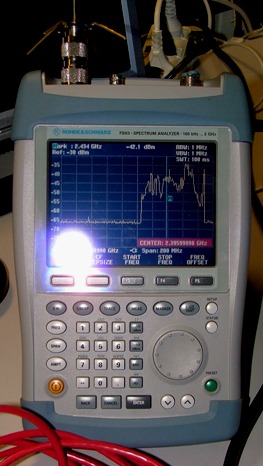 This extra time as optional, who would not like to be able to perform
This extra time as optional, who would not like to be able to perform
RF measurement? So almost everyone was there.
We were given each participant a Radio Laboratory Handbook...Oh I think this book is good to provide and increasing our knowledge about wireless network... We were delivered how to measure RF Signal attenuation in the cables. And then we were also shown how to calibrate with the instruments tool such us spectrum analizer, signal generator and wave guide cables. In this lecture, Carlo explain that there is no cable perfect due to the bad insulating part, different thicknes, density of plastic insulation and the other causes that matter. So with that instruments tool we can know, how much power do you have? Ok..We must measure it before using the cable in the future implementation...thank you Carlo for your lecture.
